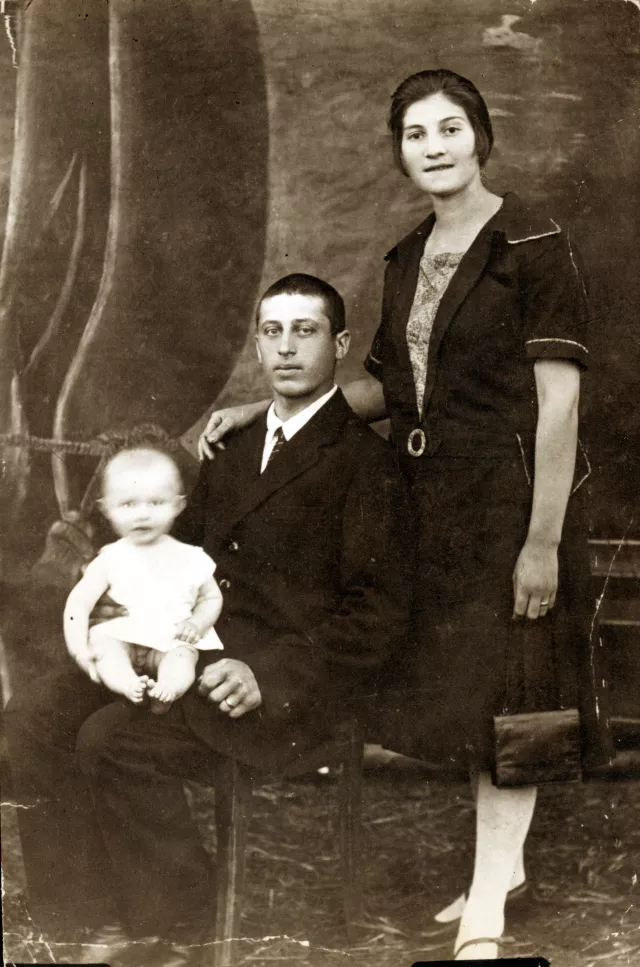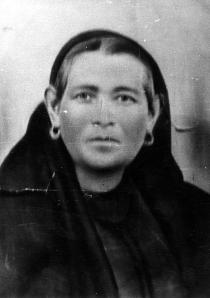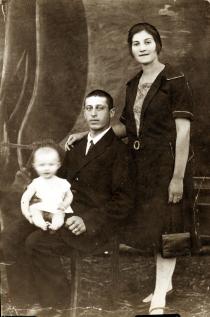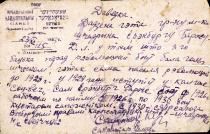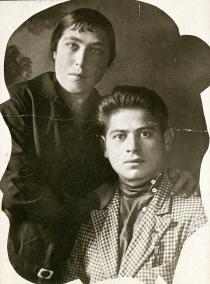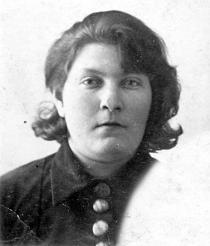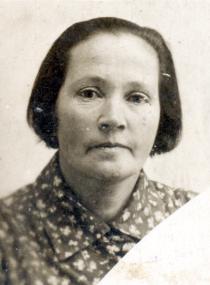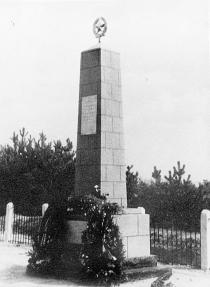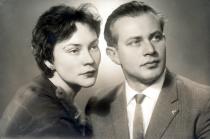Grigory, Boris and Rachel Erenburg
This is a portrait of my parents with me when I was 6 months old.
The photo was taken for our American relatives, and my shirt is lifted a little so that they could understand that the baby was a boy.
My father, Boris Davidovich Erenburg, was born in Shzedrin in 1907. The family was was religious, but poor. He became a shoemaker's apprentice very early.
At the age of 16, he started to work on his own. As there was not much work in Shzedrin, he worked in the adjacent villages.
He came to a village, collected orders, lived with one family, then with another where he worked. Those were Belorussian families, but meals were cooked for him separately, because he ate only kosher food.
My mother, Rachel Herzevna Erenburg, was also born in Shzedrin in 1907. She graduated from a Jewish elementary school. In her youth, she helped her widowed mother around the house and in the vegetable garden. She worked for the rich Jews, as a day laborer and in a candy factory. She was joyful, sang well and acted in an amateur theater.
My parents married in 1926. I was born in 1927, the eldest of four children. We moved to Bobruisk, where Father had a job in a plywood manufacturing plant.
When the war started, Bobruisk was almost instantly bombed. We went to Shzedrin by foot, but Germans arrived there very soon, and we returned to Bobruisk. The first execution of Jews was on September 9, 1941.
We were ordered into the ghetto in October. Father and I escaped and hoped to free Mother and the children, but on November 7, the Germans shot 30,000 Jews from Bobruisk, including Mother, Grandmother, my little brother, sisters and our other relatives.
Father and I were with the partisans from March 1942 until June 1944. During the war, 25 members of our family were killed. Only six survived: my father, three cousins, me and my uncle's wife, Khaya. She later married my father.
There are no Jews living in Shzedrin now. The Jewish agricultural colony of Shzedrin existed exactly 100 years - from 1842 to 1942.
After the war, I went to a forestry technical school, and then I was directed to Leningrad to Giprodrev, the state institute where they designed wood-processing plants. I worked in this institute until 1992, climbing all the way from a technician up to the main engineer of the project.
I was the secretary in the Komsomol organization of the institute. Komsomol and the Communist Party were very aggressive in anti-religious propaganda and rejected any religion. This is a reason for my assimilation, and this is why I turned 180 degrees from being a religious man into a Soviet-type atheist.
I met my second wife, Raisa Grigorievna, in 1961 when she came to work in our institute. We married in 1963. Our daughter, Lida, was born in 1966.
